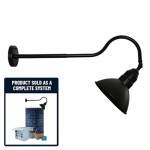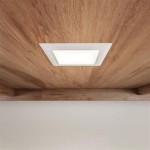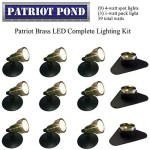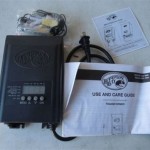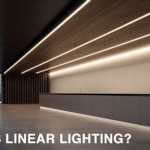```html
Outdoor Studio Lighting Photography: Mastering the Sun and Supplemental Light
Outdoor studio lighting photography represents a blend of natural environmental conditions and controlled artificial illumination. This approach affords photographers the flexibility to craft images that transcend the limitations of relying solely on available light. Mastering this technique involves understanding the properties of natural light, employing supplementary lighting equipment effectively, and synchronizing these elements to achieve the desired aesthetic.
The core principle of outdoor studio lighting photography is to manipulate the ambient light to enhance its positive aspects while mitigating its drawbacks. This often involves balancing the intensity and direction of the sun with artificial light sources, reflectors, and diffusers. The goal is to create well-lit subjects with balanced exposures, flattering shadows, and a sense of depth and dimensionality.
Understanding and Controlling Natural Light
The sun, as the primary light source in outdoor photography, presents both opportunities and challenges. Its intensity and color temperature vary considerably throughout the day. Early morning and late afternoon, known as the "golden hours," provide soft, warm light that is generally considered aesthetically pleasing. Midday sun, on the other hand, produces harsh shadows and high contrast, which can be detrimental to portraiture and other subjects that require even illumination.
Photographers can control the influence of sunlight through several methods. One is choosing the time of day for the shoot. Planning sessions during the golden hours or on overcast days can significantly improve the quality of light. Location selection also plays a crucial role. Shooting in shaded areas, such as beneath trees or near buildings, can diffuse sunlight and reduce harsh shadows.
Furthermore, light modifiers can be used to manipulate natural light. Reflectors, typically made of white, silver, or gold material, bounce sunlight onto the subject, filling in shadows and adding highlights. Diffusers, such as scrims or translucent panels, soften sunlight, creating a more even and flattering light. These modifiers are essential tools for controlling the intensity and directionality of natural light.
Utilizing Supplemental Lighting Equipment
Supplemental lighting equipment, including strobes and speedlights, provides photographers with the ability to overpower or augment natural light. Strobes, also known as studio flashes, are powerful light sources that deliver a large burst of light. Speedlights, or flashguns, are smaller and more portable, making them suitable for on-location shoots. Both types of flash units can be used to create a variety of lighting effects.
When using supplemental light, it is crucial to balance its intensity and color temperature with the ambient light. Overpowering the sun can create an artificial and unnatural look, while underpowering it may result in insufficient illumination. To achieve a balanced exposure, photographers should use a light meter to measure the intensity of both the natural light and the supplemental light. Adjustments can then be made to the flash power or the camera settings to achieve the desired balance.
Color temperature is another important consideration. The color temperature of sunlight varies throughout the day, ranging from warm tones in the morning and evening to cooler tones during midday. To ensure accurate color rendering, photographers should match the color temperature of their supplemental light to the ambient light. This can be achieved by using gels or filters to adjust the color temperature of the flash. Some flash units also have built-in color temperature adjustment features.
Techniques for Blending Natural and Artificial Light
Successfully blending natural and artificial light requires a thorough understanding of lighting ratios and exposure techniques. Lighting ratios refer to the difference in intensity between the key light (the main light source) and the fill light (the light used to fill in shadows). A typical lighting ratio for portraiture is 2:1 or 3:1, meaning the key light is two or three times brighter than the fill light. Achieving the desired lighting ratio requires careful measurement and adjustment of both the natural light and the supplemental light.
Exposure techniques, such as using manual mode and shooting in RAW format, provide photographers with greater control over the final image. Manual mode allows photographers to independently adjust the aperture, shutter speed, and ISO, providing precise control over the exposure. Shooting in RAW format captures more information than JPEG, allowing for greater flexibility in post-processing. RAW files contain all the data captured by the camera sensor, providing more latitude for adjusting the exposure, white balance, and other parameters.
High-speed sync (HSS) is a technique that allows photographers to use flash at shutter speeds faster than the camera's sync speed. The sync speed is the fastest shutter speed at which the entire sensor is exposed to light from the flash. Using a faster shutter speed without HSS will result in a dark band across the image. HSS works by pulsing the flash rapidly, providing a continuous stream of light that allows the camera to capture the entire image at faster shutter speeds. This technique is particularly useful for overpowering the sun and freezing motion in bright daylight.
Another useful technique is using neutral density (ND) filters. ND filters reduce the amount of light entering the lens, allowing photographers to use wider apertures or slower shutter speeds in bright conditions. This can be helpful for creating shallow depth of field or motion blur in outdoor portraits. ND filters can also be used in conjunction with flash to balance the exposure and control the ambient light.
Furthermore, understanding the Inverse Square Law is vital. This law dictates that the intensity of light decreases inversely proportional to the square of the distance from the light source. This means that doubling the distance from a light source reduces the light intensity to one-quarter of its original value. Photographers must consider the Inverse Square Law when positioning their lights and adjusting their power settings.
Finally, post-processing plays a crucial role in refining the final image. Editing software, such as Adobe Photoshop or Lightroom, allows photographers to fine-tune the exposure, contrast, color balance, and other parameters. Post-processing can also be used to remove distractions, smooth skin, and enhance the overall aesthetic of the image. However, it is important to use post-processing judiciously, avoiding excessive manipulation that can make the image look unnatural.
```
Pin By David Casimer On Photography Ideas Lighting Setup Portrait Studio

The Portrait Photographer Studio Lights Outdoors

Photography Lighting Tips Create A Photo Studio Anywhere

Applying The 3 Light Studio Setup To Outdoor Portraits

How To Mix Ambient Light And Fill Flash For Outdoor Portraits

Outdoor Lighting Using Umbrella To Balance The Exposure Photography Setup Studio Techniques

Photography Studio Equipment List 2024 Full Set Up Guide

18 Types Of Photography Lighting Equipment You Need To Know

Outdoor Portrait Photo Shoot Skye Steele Blog Post

Applying The 3 Light Studio Setup To Outdoor Portraits
Related Posts
